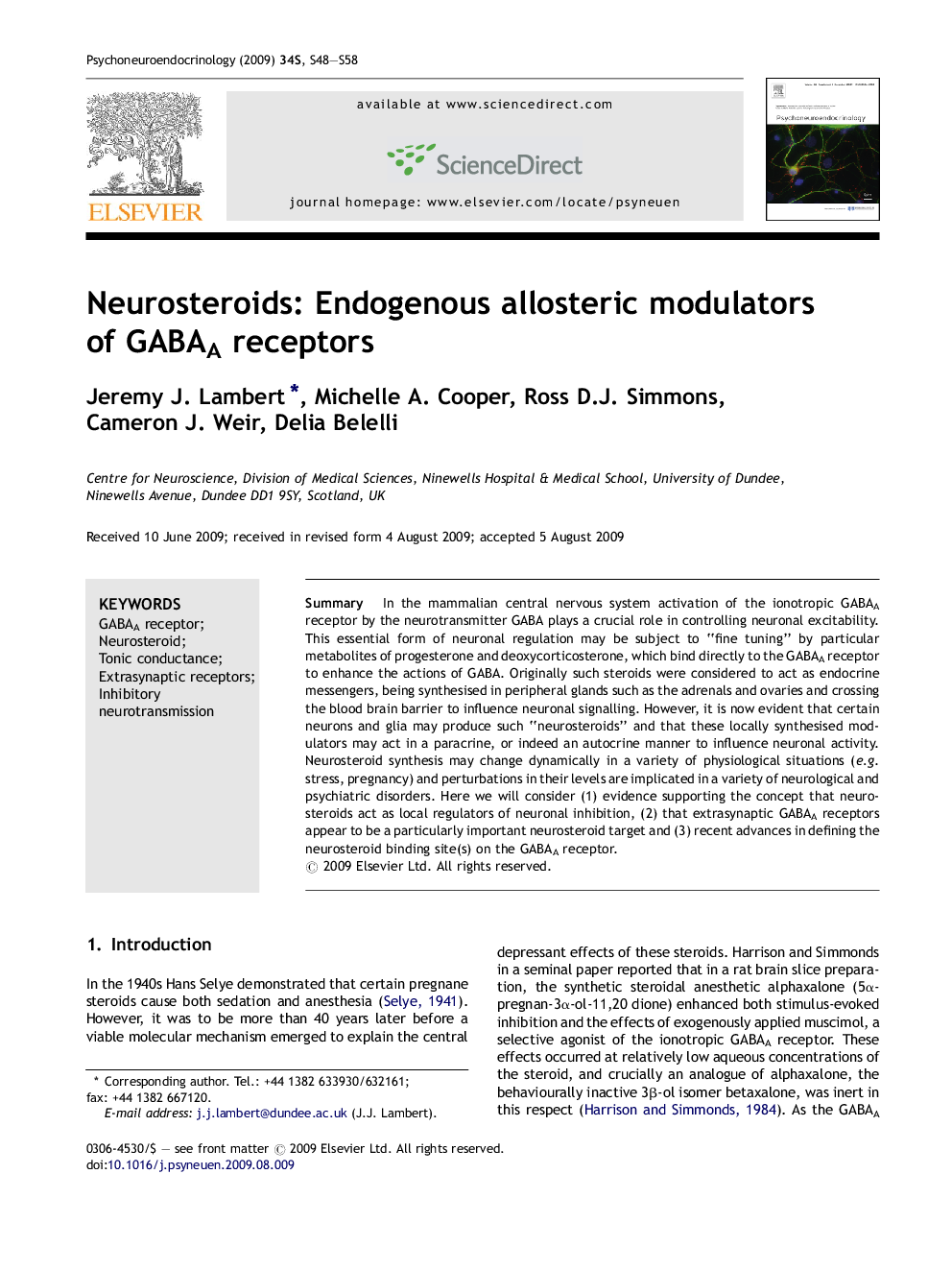| Article ID | Journal | Published Year | Pages | File Type |
|---|---|---|---|---|
| 336757 | Psychoneuroendocrinology | 2009 | 11 Pages |
SummaryIn the mammalian central nervous system activation of the ionotropic GABAA receptor by the neurotransmitter GABA plays a crucial role in controlling neuronal excitability. This essential form of neuronal regulation may be subject to “fine tuning” by particular metabolites of progesterone and deoxycorticosterone, which bind directly to the GABAA receptor to enhance the actions of GABA. Originally such steroids were considered to act as endocrine messengers, being synthesised in peripheral glands such as the adrenals and ovaries and crossing the blood brain barrier to influence neuronal signalling. However, it is now evident that certain neurons and glia may produce such “neurosteroids” and that these locally synthesised modulators may act in a paracrine, or indeed an autocrine manner to influence neuronal activity. Neurosteroid synthesis may change dynamically in a variety of physiological situations (e.g. stress, pregnancy) and perturbations in their levels are implicated in a variety of neurological and psychiatric disorders. Here we will consider (1) evidence supporting the concept that neurosteroids act as local regulators of neuronal inhibition, (2) that extrasynaptic GABAA receptors appear to be a particularly important neurosteroid target and (3) recent advances in defining the neurosteroid binding site(s) on the GABAA receptor.
